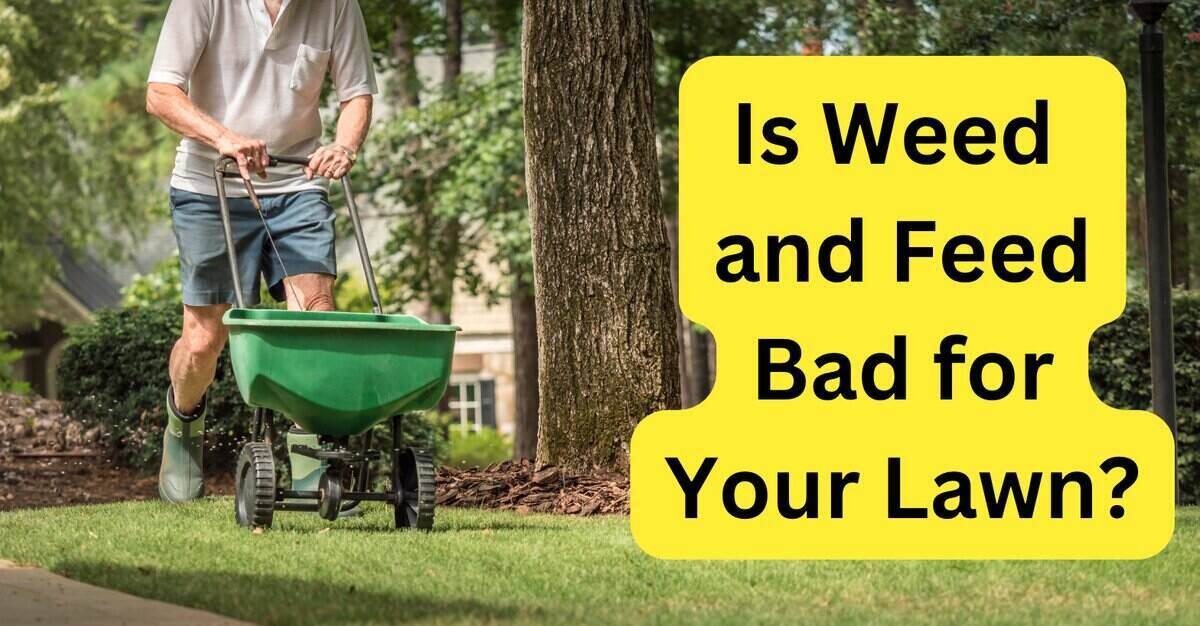
You’ve spent hours nurturing your lawn, but stray weeds still manage to return. Then one day, somebody tells you about a magical product – weed and feed – that could help you eliminate weeds while fertilizing your lawn at the same time. But is it too good to be true? Let’s find out if weed and feed is bad for your lawn.
Weed and feed is a popular lawn care product, but it’s also controversial. There is a lot you should know before applying it to your lawn. In this blog, we will give all the information you need before deciding whether to use weed and feed to treat weeds and fertilize your lawn.
What Is Weed and Feed?
Taking care of your lawn can feel like a full-time job. To maintain a work-life balance, some homeowners resort to weed and feed products, which help them fertilize the grass and control weeds at the same time.
Weed and feed is basically a combination of lawn fertilizer and herbicide that will kill certain weeds but not your grass. Some examples include Scotts Turf Builder and GreenView weed and feed.
How Does Weed and Feed Work?
The fertilizer and herbicide complement each other well because while the first helps promote healthy grass growth, the latter prevents unwanted growth from occurring on your lawn. The fertilizer usually contains nitrogen, phosphorus, and potassium, and the herbicide contains:
- Post-emergent herbicides to target weeds already growing (i.e., 2,4-D, MCPP, or dicamba) or
- Pre-emergent herbicides to prevent weed seed from germinating (i.e., dithiopyr)
7 Reasons to Avoid Weed and Feed
Weed and feed is a controversial product. It can be effective if used correctly, so it may seem like a more straightforward solution — until you consider its long-term consequences. Here are seven reasons you may want to avoid using weed and feed for lawns:
1. Excessive Use Of Herbicides

Weed and feed might seem practical, but it results in the overuse of harmful chemicals. Why? Because traditional herbicides are typically applied as spot treatments in small areas with weeds. On the other hand, weed and feed is applied all over the lawn, even in healthy areas where no weeds exist.
You can prevent weeds from appearing on your lawn by applying traditional pre-emergent herbicides in select areas, which would be more effective and less harmful to the ecosystem.
2. Ineffective Use of Fertilizers
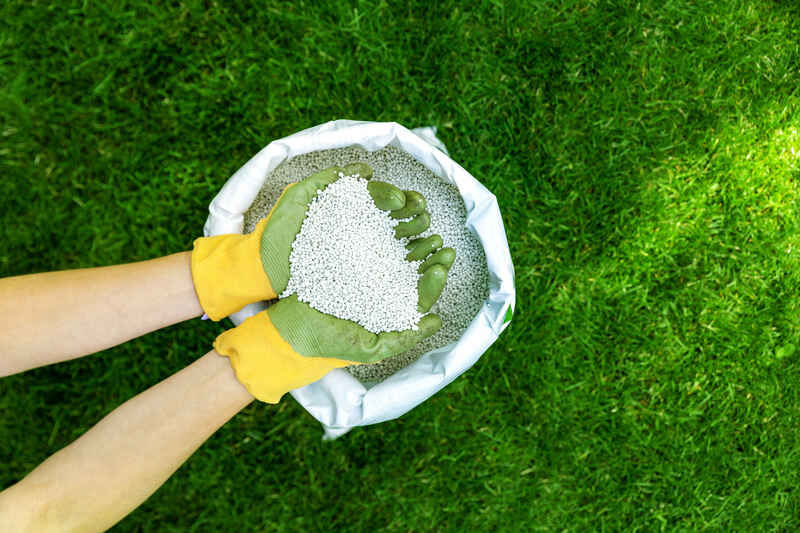
Weed and feed can present challenges to your fertilizer schedule. For example, if you want to get rid of summer weeds on your cool-season lawn, the fertilizer in your weed and feed may burn your turf. Fertilizer applications for cool-season grass should stop between March and September, so if you have a weed problem during that time, weed and feed might not be fitting.
Similarly, if you’re trying to manage fall weeds, applying feed to your warm-season grass at that time of the year isn’t ideal. These grasses need to slow down in growth before they enter their dormant period, so the fertilizer in weed and feed products could lead to winterkill.
3. Hinders Seed Germination
While it is true that weed and feed can stop weed seeds from growing, it can also prevent grass seeds from germinating and your grass shoots from developing, so it is a double-edged sword.
The bottom line: Don’t apply weed and feed after overseeding your lawn.
For more information, see our article: “How Long After Weed and Feed Can You Plant Seed?”
4. Threatens Your Lawn’s Long-Term Health
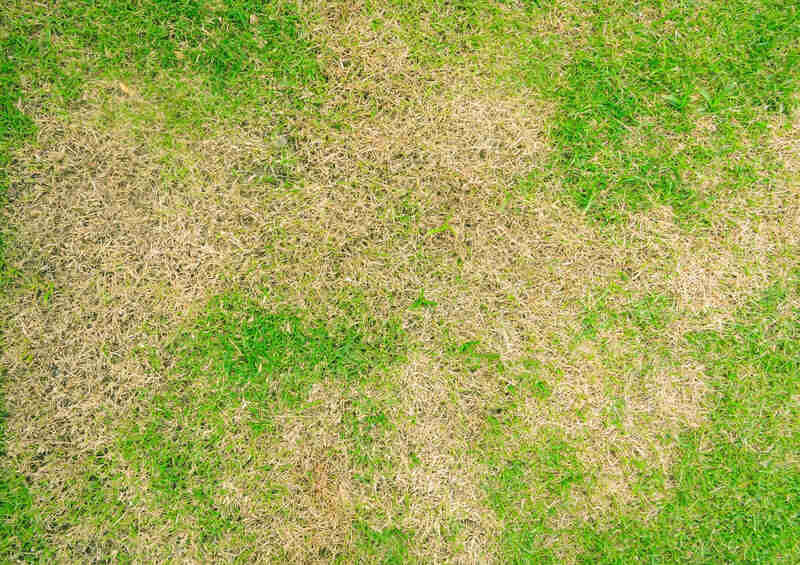
Most weed killers are systemic (meaning they travel through the plant) so they can cause long-term damage to your lawn. However, weed and feed is applied all over the lawn, which means your lawn is more at risk of damage than if you were to spot-treat sparingly with traditional herbicides.
The herbicides that weed and feed contains are meant to kill the seeds of the weeds before they can sprout, but if you use them too often or in high doses, they can destroy your healthy lawn’s roots instead. That will eventually lead to browning out your grass blades and even death of parts of the yard over time.
5. Harms Trees and Shrubs
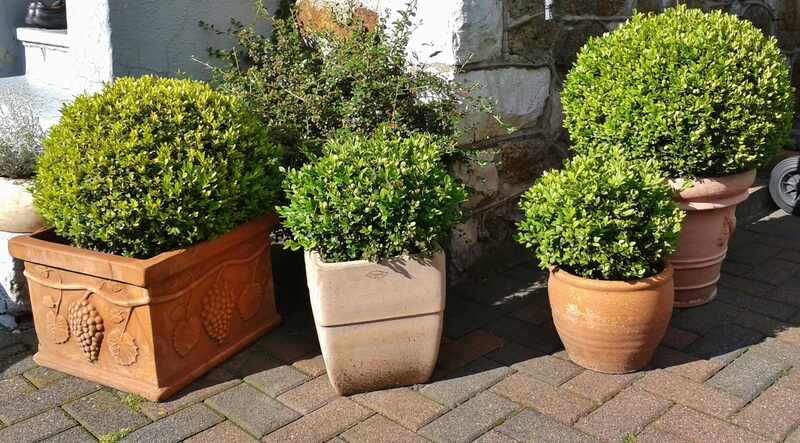
Weed and feed’s chemicals may harm trees and shrubs if you apply it too close to them or during their growth periods (usually spring or fall). That happens because trees’ roots expand beyond the planted area. So remember to be extremely careful if you are growing other plants nearby.
6. Health Risks For You, Your Family, And Your Pets
As with any synthetic chemical treatment, the chemicals from weed and feed can be absorbed through the skin or ingested by pets if they lick their paws after walking through a treated area. Since weed and feed is applied all over the lawn, you might be increasing your risk of health problems.
Weed and feed contains 2,4-D, which has been linked to an increased risk of cancer, decreased fertility, and congenital disabilities among families that use it. So if you have children or pets running around outside in your yard, you should limit their exposure to weed killers and fertilizers.
7. Harms the Environment
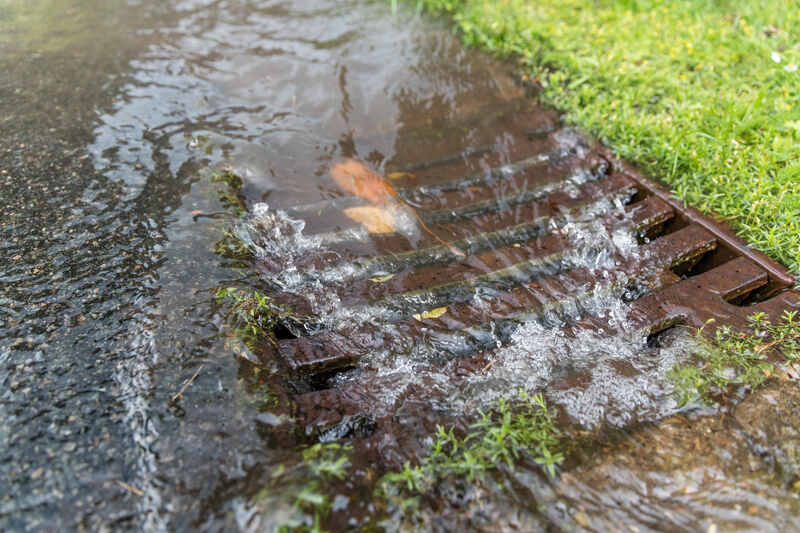
The chemicals contained in weed and feed can easily pollute stormwater runoff, especially since these chemicals are applied in high doses. Weed and feed’s chemicals may travel through storm drains to streams or lakes and seep into groundwater sources, potentially contaminating fish and other aquatic life forms.
In addition, some birds mistake weed and feed granules for grit, which can lead to their deaths and unbalance the environment. (Warning: This same problem happens with any chemical granule, not just weed and feed).
What Are the Benefits of Weed and Feed?
The main reason some people use weed and feed is that it makes their lives easier. However, if you are aware of all the risks and still wish to proceed, here are some benefits of weed and feed:
- Weed and feed is easy to use. You sprinkle the granules over the top of your existing grass and let them do their job. You don’t have to dig or pull weeds out of the ground. (A weed and feed spray is also available for easy use.)
- It’s convenient. You don’t have to worry about applying more than one kind of product. Weed and feed is all-in-one; it will save you time by not having to remember what goes where and when. You might also save money on multiple lawn care products.
- Weed and feed is not difficult to find. It is available at most hardware stores and garden centers.
- It will kill most types of weeds. Weed and feed is a broadleaf weed killer that will eliminate several weeds, such as dandelions and chickweed, while promoting healthy grass growth.
- It will give you a green lawn. The “feed” in weed and feed will provide the necessary nutrients to make your lawn a lush, healthy green color. What homeowner doesn’t want that?
To sum everything up:
| Pros of weed and feed | Cons of weed and feed |
| ✓ Easy to use ✓ Saves time ✓ Easy to find in stores ✓ Kills most weeds | ✘ Encourages excessive chemical use ✘ Harms the environment ✘ Threatens long-term lawn health ✘ May increase health risks for your loved ones |
How to Apply Weed and Feed?
The application of weed and feed can be made in three forms: granular, liquid, or as a soluble mixture with water. The granular form is popular because it’s easy to use. You sprinkle it on your lawn like you would other fertilizers. For help finding the right kind of weed and feed for your lawn, you can check out our reviews of the best weed and feed products available on the market right now.
It is crucial to lightly water your lawn before applying weed and feed and 24 hours later, so it soaks into the ground. Regardless, always read the instructions on the label to avoid harming your grass and yourself. Learn more in our article about how to use weed and feed correctly for the best results.
When to Apply Weed and Feed?
Most weed and feed products are designed to be applied in the early spring when plants are actively growing (March through May). That allows the fertilizer to work its magic while preventing weeds from taking root in the soil.
There are some weed and feed products for fall on the market, but these should only be applied in cool-season grasses.
It’s important to remember that these products are not meant for use during the summer months, as they can cause damage to the grass. Moreover, suppose you wait until November or December to use it. In that case, most weeds will have died off anyway because of cold temperatures.
Weed and feed should only be applied when no rain is expected for at least 24 hours after application. If you water your lawn too soon after application, the herbicide may run off and harm surrounding ecosystems.
Weed and Feed Alternatives
The good news is that weed and feed is not the only option to keep weeds out of your yard and give your grass nutrients. Here are some alternatives to synthetic lawn chemicals that will help keep your grass looking great without all the potential harm:
Add Mulch
One of the best ways to keep weeds from growing in your lawn is to add mulch to the beds in your yard. Mulching the garden beds will help prevent pesky weeds from spreading their seeds onto your lawn.
You can also add mulch to your lawn by leaving grass clippings in the yard or mowing over autumn leaves. This handy mulch layer will help block weed seeds from the sun while offering nutrients for your turfgrass. In sum, mulch feeds the soil while preventing weeds – like an organic weed and feed.
Use Organic Fertilizers
Organic alternatives to synthetic fertilizers can feed your lawn with minimal impact on the environment. For example, organic fertilizers are made of animal remains, decomposing plants, food compost, and other natural materials.
The best part is that you can make DIY organic fertilizers at home and even include your kids in the activity.
Use Vinegar
You can kill weeds quickly by spraying them with horticultural vinegar. Vinegar works as a weed killer by breaking down the cell walls of the weeds, causing them to wither and die. However, you have to be careful not to spray the leaves of other plants or grasses because they can also be affected by vinegar’s acid.
Use Corn Gluten Meal
Corn gluten meal is a byproduct of corn milling that contains nitrogen. It works as a pre-emergent herbicide, preventing weed seeds from establishing by slowly releasing nitrogen over time. This nitrogen in corn gluten meal can even feed your lawn, making it greener.
It’s also an organic option that won’t harm pets or children if ingested. The application of corn gluten meal (which is an all-natural weed and feed) needs to be timed correctly to be effective.
FAQ About Weed and Feed
1. When is it Too Late to Use Weed and Feed?
Once summer arrives, and with it the weeds, it is too late to apply weed and feed. Therefore, it is not recommended to use this product during summer or in temperatures above 90 degrees Fahrenheit.
The optimal time to apply pre-emergents in the spring is when the soil temperature reaches approximately 50-55 degrees Fahrenheit. This temperature range is crucial for the herbicide to stop weed seeds from taking root.
2. What Does Weed and Feed Kill?
Weed and feed can kill broadleaf weeds like dandelions, dollarweed, oxalis, chickweed, knotweed, plantains, henbit, and other common weeds. However, grassy weeds such as crabgrass usually resist the action of weed and feed.
3. Is Weed and Feed Harmful to Dogs?
Weed and feed can harm dogs, cats, and other small animals if they come in contact with it before it dries completely.
4. Can I Use Weed and Feed on New Grass?
If you’re starting a new lawn, don’t use fertilizers with crabgrass preventer or weed and feed fertilizers for four weeks before planting time. Wait until you’ve planted the grass and it has grown strong by mowing it at least three times before using those fertilizers.
When to Hire a Professional
You have tried every weed-killing product and method you could think of: pulling, spraying with weed and feed, even burning them (don’t try this one again!). But no matter what you do, the weeds always seem to come back and take over your lawn.
Well, now it’s time for the pros to take over. You can connect with a local pro who has the tools and experience to handle weed control while also feeding your lawn.
Main Image Credit: The Toidi / Shutterstock photo with text overlay